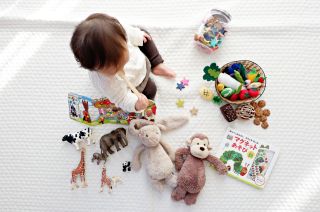Bias
The Cognitive Development of Prejudices
We can assimilate and accommodate people who are different.
Posted January 18, 2024 Reviewed by Ray Parker
Key points
- Prejudices are learned through childhood assimilation (fitting new information into existing categories).
- Prejudices are also learned through accommodation (creating new categories).
- These learned prejudices can be unlearned or modified by creating new, more inclusive categories.

Swiss psychologist Jean Piaget (1896-1980) is best known for his theories of cognitive development in children. Two of the cognitive processes he explored extensively were assimilation and accommodation. These processes continue throughout our lives and impact the learning of prejudices toward people different from us.
Assimilation
A definition of assimilation is "the process of receiving new facts or of responding to new situations in conformity with what is already available to consciousness."
To illustrate this concept, imagine a child observing a robin and being told it is a bird. The child now has a category into which he can assimilate other creatures that resemble robins in some essential ways.
Hummingbirds, eagles, ostriches, and chickens—all very different in size and appearance—can still be readily recognized as birds, even by a young child. All these species of birds meet enough criteria to be identified as such (i.e., they have beaks and wings and lay eggs, etc.).
Accommodation
The second learning process, accommodation, is "an adjustment or adaptation to new stimuli."
What happens when the child who has internalized the concept of a bird sees a fish for the first time? His brain searches for a category in which to fit this new object and finds none. He might recognize it as an animal (another preexisting category), but he can tell it doesn't match a bird.
The child must accommodate by creating a new category called fish. Once he does this, goldfish, catfish, and sharks can fit into his understanding of the world.
Learned prejudice
Perhaps these two concepts of learning can be applied to the learning or unlearning of prejudices toward people who are different from us.
First, we must recognize that prejudices are not instinctual; they are learned. Children learn from observing the people around them through verbal and non-verbal messages.
We share a human tendency toward tribalism. We want to understand where we belong and who our people are. Our caregivers influence us very early in life to begin assigning people to in-groups and out-groups, attributing positive or negative characteristics to each.
Once a category exists, we may assimilate new people into that category. The category may elicit positive or negative emotions depending on what we have been taught about its members.
Family: Our first people category
The category family begins to form as soon as an infant learns that someone comes when he cries out in need of food or comfort. Typically, the mother is the first person to establish the category; if a father is involved, he is likely the second. The baby intuits, "Family are the people who take care of me."
Assimilation continues when a grandmother, grandfather, aunt, uncle, brother, or sister is introduced. As these people appear repeatedly, showing love and care for the child, he learns that they are like him, they are bonded to him, and hopefully, they can be trusted.
Sometimes, others show up that are not biologically related, yet are introduced in such a way or occupy a role that is enough "like family" that the child assimilates them as well.
Family members, biological or non-biological, can be of the same or different ethnicity and skin color, similar or varying temperaments and personality styles, and still be recognizable to the child as members of the category family.
The expansion of social categories
As children grow, their world expands, and they continue to create new categories and assimilate new people. Children need categories for friends, teachers, students, neighbors, etc.
This is where it gets tricky and where prejudices may start to manifest.
If the child has grown up in a relatively homogeneous social environment, he now sees that while all the new people he meets fit the category of people, some of them look and act quite differently than his people.
Instead of assimilating the different people into a known, safe category or creating a new category that opens the door to adapting to different people (accommodation), the child may develop a negative prejudice instead.
Prejudice is a defensive strategy more likely to come into play when elders have trained a child to see people who are different as a threat without data to support that contention. Prejudices defend against the discomfort of engaging with people who are different solely because they don't fit into our acceptable, safe categories. They can limit our growth and arbitrarily separate us from people who might otherwise be incorporated into our lives in wonderful ways.
Can learned prejudices be unlearned?
If we stipulate that cognitive development persists throughout the lifespan, we can say with some confidence that a prejudice learned early in life can be modified or can be discarded and replaced with a more positive one.
These are some keys to self-evaluation and change:
- If you become aware of a prejudice against someone, examine its source. When and where did you learn it? How did it serve the people (the in-group) who taught it to you? If it does not serve you now, you can consciously challenge and eradicate it. It may take time, but it can be done.
- Befriend a person about whom you have held a negative prejudice. This shows you experientially that there is room for individual differences within categories. Nothing destroys stereotyping and prejudice faster than pursuing genuine relationships with those you have unfairly categorized. You find that you want to assimilate them into your life because they become similar to your existing friends in your mutual caring, kindness, and interest in spending time together.
- You can accommodate by creating a new category that helps you stay open toward someone new. For example, when moving temporarily to a new environment, you may establish sub-categories, such as when people speak of their "college friends," "work family," or "Arizona neighbors." A new qualifier allows you to invite new people, if only for a while.
- Read literature (fiction, non-fiction, biography) that reinforces tendencies toward openness, acceptance, and reconciliation between people groups.
Prejudice is a complex psychological and sociological phenomenon. The concepts of assimilation and accommodation are two pieces of the puzzle. They can help us better understand how we acquire prejudices and how to shed them when they are not serving a good purpose.
References
“Accommodation.” Merriam-Webster.com Dictionary, Merriam-Webster, https://www.merriam-webster.com/dictionary/accommodation. Accessed 17 Jan. 2024.
“Assimilation.” Merriam-Webster.com Dictionary, Merriam-Webster, https://www.merriam-webster.com/dictionary/assimilation. Accessed 17 Jan. 2024.
Bergen, T. J., Jr. (2001). The development of prejudice in children. Education, 122(1), 154+. https://link.gale.com/apps/doc/A80856273/AONE?u=anon~288deb89&sid=googl…




